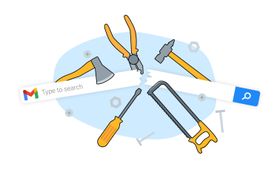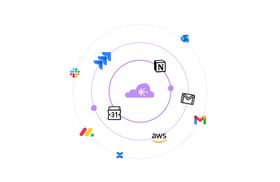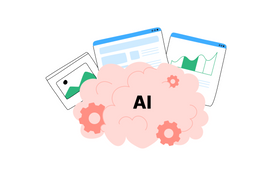Intranet vs. Digital Workplace: Key Benefits & Differences
Updated May 10, 2023

The digital workplace and intranet are two essential tools that modern businesses use to manage their internal operations. They have been instrumental in fostering the remote work culture that companies have increasingly embraced in recent years.
Both serve as platforms for sharing and storing data, crucial for facilitating collaboration and communication within organizations.
What Is a Digital Workplace?
The digital workplace is a virtual office where workers can access relevant organizational data and collaboration tools. Employees can work from anywhere, at any time, and on any device.
This system is crucial in shaping a business' brand and employee experience.
What Is an Intranet?
Intranet is a repository of all data and information for an organization, business, or corporation. It is an internally-accessible private network used to securely access data and computing resources among employees. It can be used for collaboration, teleconferencing, and internal communication.
While both the digital workplace and intranet provide similar advantages, such as improved productivity and collaboration, there are significant differences between the two. The digital workplace focuses on providing employees with the tools they need to work efficiently from anywhere, while the intranet is mainly used for sharing data within the organization.
Let’s take a closer look at their benefits and differences.
Benefits of an Intranet
An intranet is a valuable tool that businesses can use to streamline their workflows and internal operations.
- Improved Employee Engagement: In addition to serving as a platform for employees and teams to communicate and collaborate, the intranet serves as a hub for up-to-date operational and work-related information.
- This fosters employee engagement and makes everyone in the workforce feel connected to their organization and its mission.
- Enhanced Communication: The intranet provides rapid communication between teams, enabling easy exchange of ideas and better collaboration. It serves as a central platform for employees to share information, discuss projects, and ask questions, leading to increased productivity.
- Effective Time Management: Housing all the information employees would ever need, whenever they need it, the intranet enables them to be more time-efficient.
- Strong Company Culture: By fostering a culture of open communication and trust, the intranet allows employees to immerse themselves in spaces where they can learn how their colleagues and superiors work. Intranet also serves as the ideal platform for companies to share their mission, values, and goals, spurring a sense of community among all workers.
✶ Learn how to supercharge your intranet search
Benefits of a Digital Workplace
A virtual office is more than sufficient for many organizations to function smoothly. Similarly, a digital workplace helps companies attain the zenith of remote working.
- Increased Revenue: By allowing employees to work remotely by virtue of a digital workplace, businesses can save money on office space, real estate, equipment, and other related expenses.
- Reduced Operational Costs: Digital workplaces help reduce other costs of in-person collaboration, such as travel expenses and office space costs.
- Improved Productivity: Digital workplaces make collaboration easier, meaning employees can complete more work in less time.
- Increased Performance: Digital workplaces provide businesses with valuable data and analytics to track KPIs, such as employee engagement and process and application adoption. By leveraging these insights, companies can make informed decisions about optimizing their operations and improving performance.
Digital workplace and intranet are crucial components of a modern business's internal operations. They both provide robust platforms for communication, collaboration, and knowledge-sharing among employees.
Understanding the Key Differences
A digital workplace can be enhanced with an intranet, and modern intranets are an important part of a digital workplace.
To better understand how both concepts work together and apart, let's take a look at the key differences between them:
- Purpose: A digital workplace encompasses all the tools any company can use to ensure productivity in a remote setting. In contrast, an intranet brings together information and workplace tools that are specific to an organization.
- Communication: A digital workplace ensures synchronization in communication between physical and digital workplaces, so employees can easily collaborate and communicate from any location. An intranet, on the other hand, enables the easier integration of communication and workflow tools.
- Knowledge: While both digital workplace and intranet serve as knowledge repositories to varying degrees, the latter is inclined towards sharing, while the former relates more to recording and storage.
Powerful Search “Unleashes” the Capabilities of Intranets and Digital Workplaces
Whether an organization relies solely on an intranet or expands it to a broader concept of a digital workplace, powerful search tools are crucial to either approach. They enable employees to access all the information they need quickly and easily, making collaboration and knowledge sharing more effective.
Unleash is a powerful search tool that can make a world of difference to intranet and digital workplace search. Employees can quickly find the information they need, whether it is stored in a database, a document, an email, or anywhere in the intranet or digital workplace.





